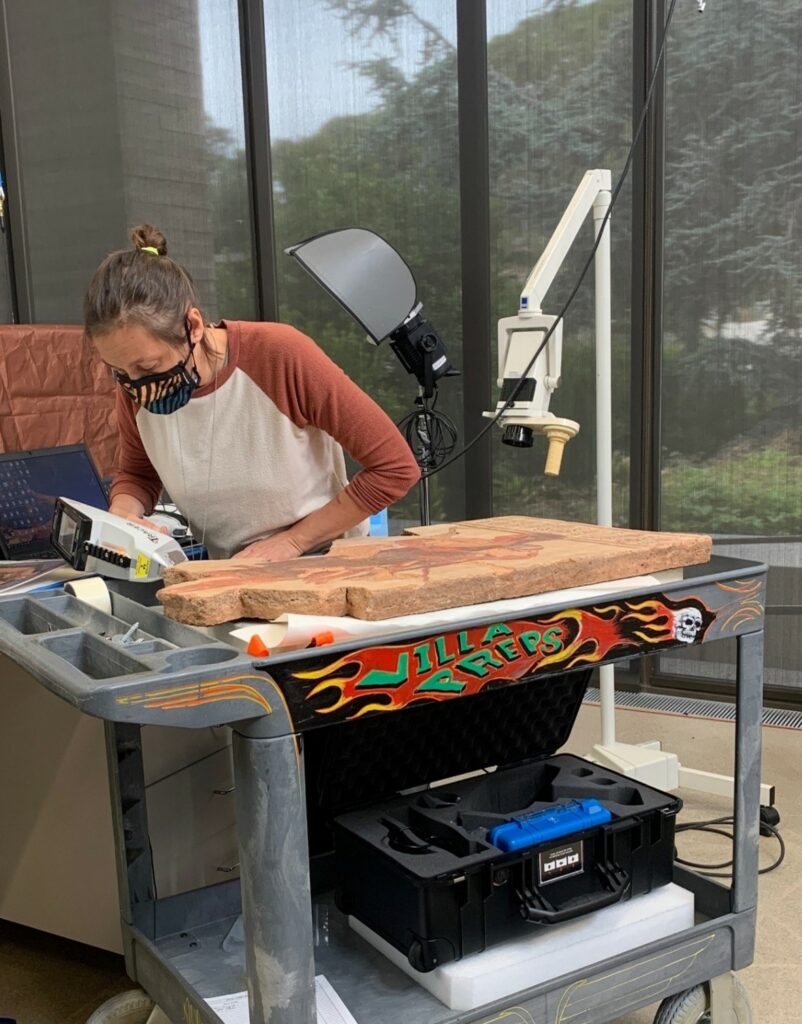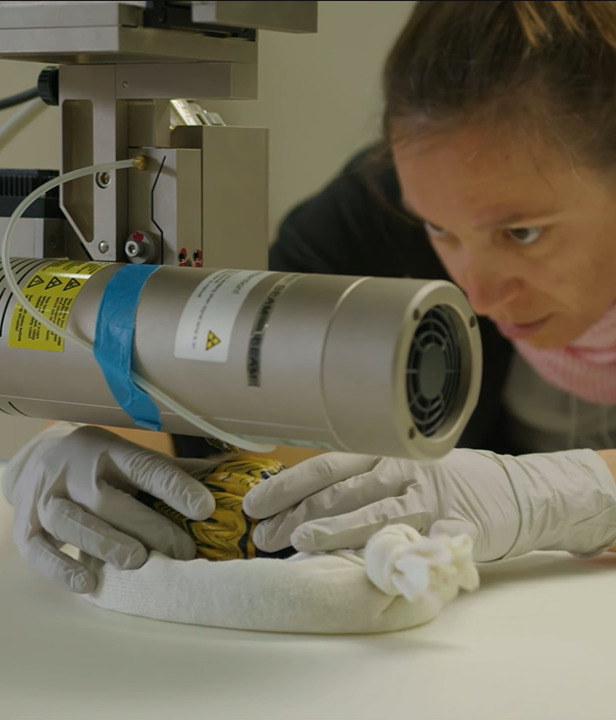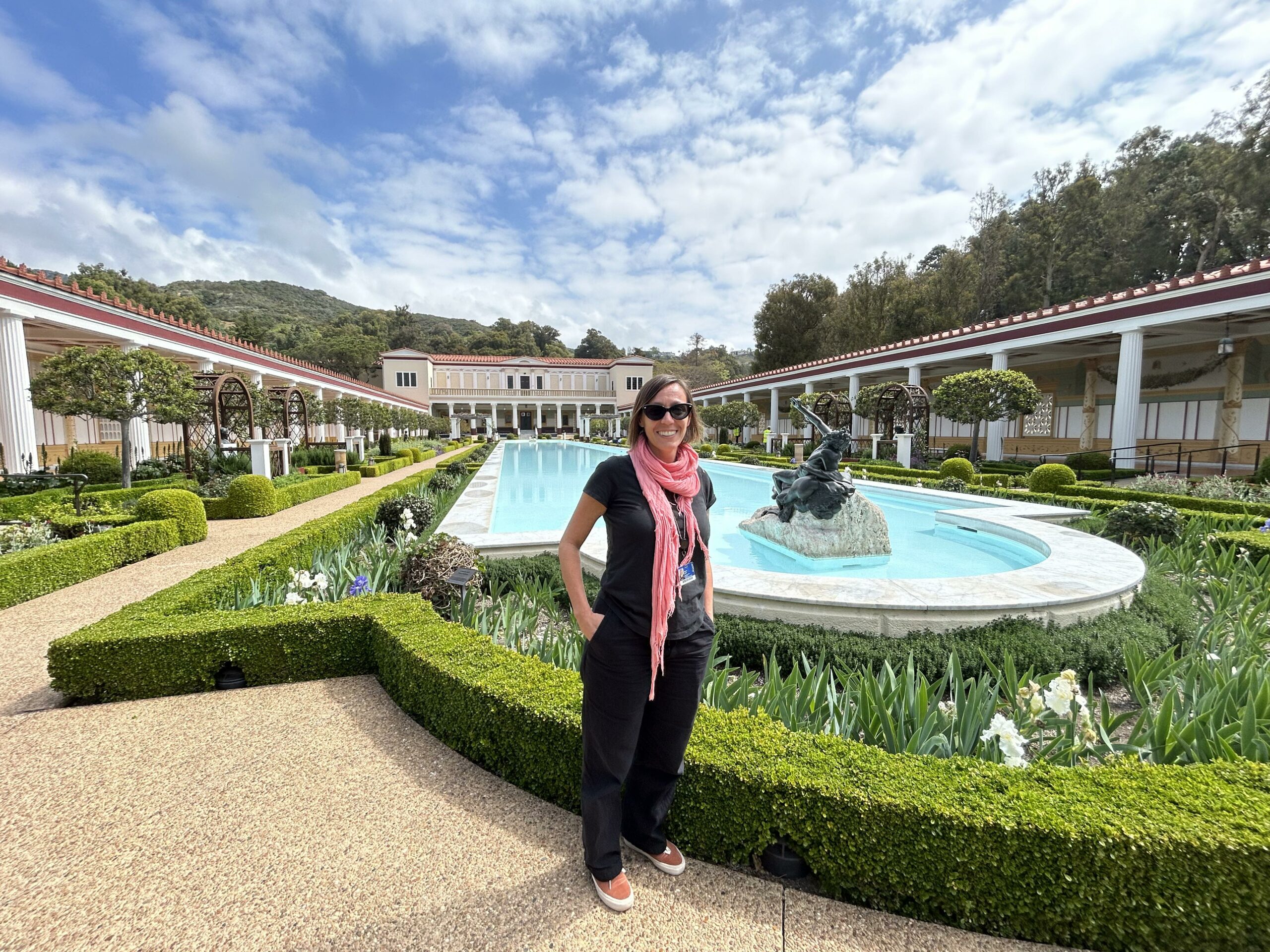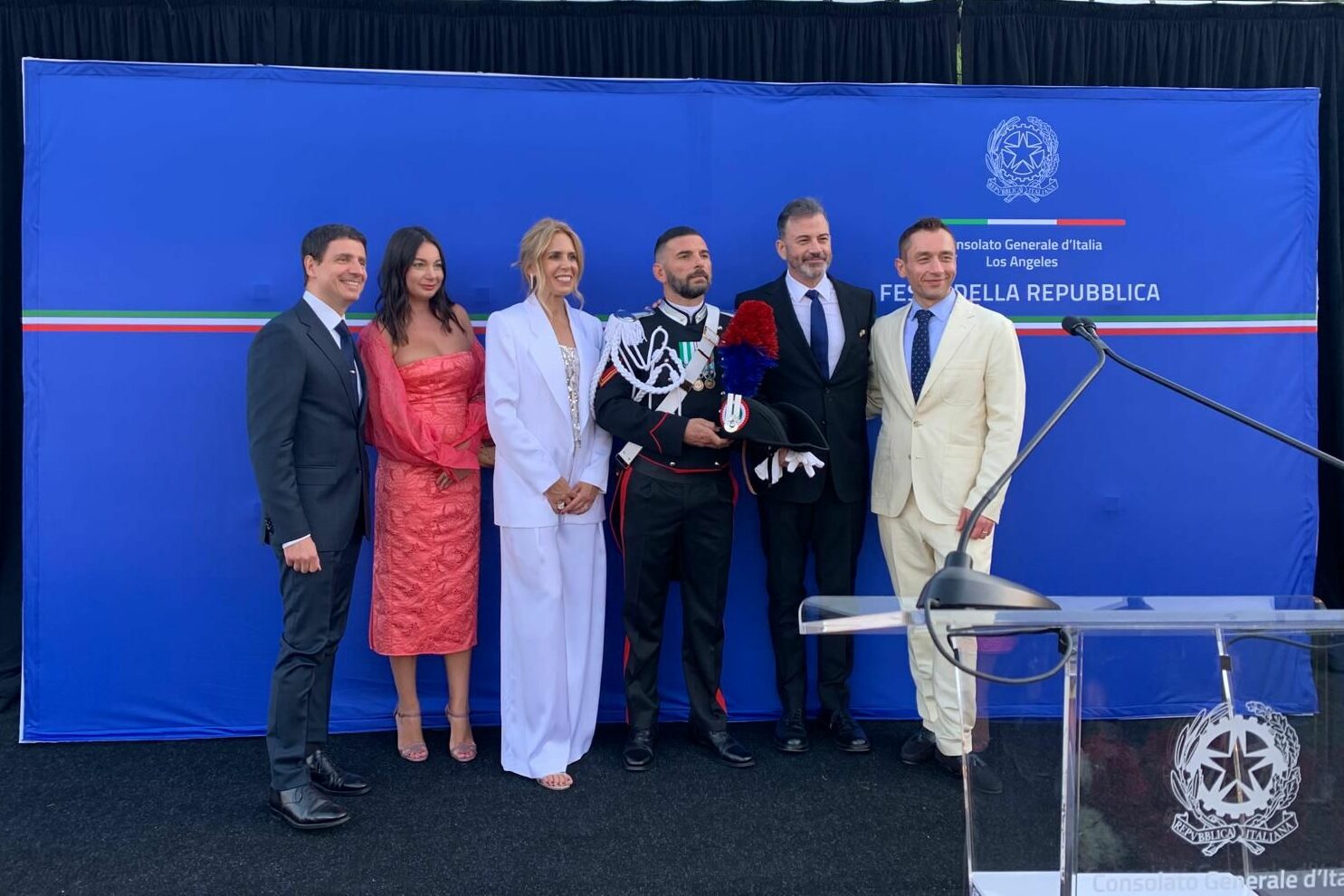Could the presence of lead in a bronze statue give us clues about the historical era in which the statue was crafted? The answer to this question goes beyond a simple “yes.” Indeed, understanding the composition of the materials used in art not only sheds light on the techniques employed but also, when placed within a broader cultural context, offers insights into trade dynamics among different civilizations spanning centuries and millennia.
This type of interdisciplinary research, which brings together archaeological insights with technical expertise, is the domain of archaeological scientists like Monica Ganio, who works at the Getty Conservation Institute. “My focus is the comprehensive study of the materials’ origins, potential alterations to the object, and any prior restoration efforts, to give conservators and curators a deeper understanding of an artifact’s journey through history,” Monica tells me during my visit to her workshop, located within the Getty Villa in Malibu. “For instance, glassware was often manufactured in specific areas, such as the Syro-Palestinian region, before being distributed across the Roman Empire, where it would undergo reshaping and coloring to suit varied preferences. This offers valuable insights into the scale of commerce during Roman times.”
After completing her studies in Cultural Heritage Science and Technology at the University of Turin and undertaking an internship at the Reggia di Venaria, Monica Ganio undertook a journey of exploration through the Master of Talents program. This led her to a year-long stint at the Getty Conservation Institute, which culminated in a doctoral pursuit at the Catholic University Leuven in Belgium. She returned to the United States in 2014, as a post-doctoral fellow in Chicago under the NU-Access project, a collaboration between Northwestern University and the Art Institute of Chicago, before permanently joining the Getty Conservation Institute in 2015.

In addition to the archaeological knowledge side, there is a scientific side to your job. What kind of tools do you use for your studies and when were they introduced in the field?
I use several, among them is the X-ray fluorescence spectrometer, called XRF for short, which is an X-ray tool used for routine, relatively non-destructive chemical analysis of rocks, minerals, sediments, and other inorganic materials. The interesting thing about it is that it allows non-invasive, non-destructive analysis to be carried out. This means we don’t need to take a sample of the object, something we try to limit as much as possible here at the museum.
In what research did you use it?
The Getty commissioned a catalog of all their glass production. In that specific case, we selected 24 glass jars. I am talking about the ones you usually find in museum collections: they generally have very bright colors, with a blue background and zigzag decorations, usually yellow, turquoise, or white. The selected objects were all crafted between the 6th and the 1st centuries BC, and they are all very similar to each other. Their shape, their size, how they were forged, the way their necks were made are all features that can help us give a preliminary dating. My job was to figure out what colorants were used in their production and whether there was variation associated with both the chronology and the shape of the object itself. Using XRF was great because I didn’t need to take samples from any specimen, but I was able to get enough information to understand what colorants were used.
What conclusion did you come to in this case?
For instance, I discovered that, initially, the only substance used to produce white was antimony, and that lead came only at a later stage. There was a change in the formula over a six-hundred-year period and that’s interesting and very significant.
Did you work on statues or other larger artifacts?
Yes! For instance, I worked on the Drunken Satyr, which was here some time ago for restoration, before going back to the National Archaeological Museum in Naples. In that case, we knew from a historiographical point of view that there had been some work done on the Satyr in the Bourbon period, and the version that we see at the moment includes original Roman parts, parts added in the Bourbon period, and then elements of a series of restorations carried out in the last two centuries. For Erik Risser, the conservator who was following the project, it was necessary to understand which were the original parts and which were the Bourbon parts. Here, again, the XRF was crucial: the variation observed in the composition of the bronze alloy made it possible to distinguish the Roman parts from those added in the Bourbon period. Funny thing: while working on the Satyr, we found fragments of an Italian newspaper from the 1960s in the gap between the statue and its stone pedestal.

Besides alloys, what other materials can give us information on an artifact?
Pigments. The mummy of Herakleides in the Getty collection is wrapped in red-orange gauze, which contains a red lead pigment, so we knew it was a lead-based color. Through lead isotope analysis, we were able to trace its provenance, which is incredibly interesting because it comes from the Rio Tinto in Spain, so we understood that a material from that specific area was used in the mummification process.
What project are you particularly proud of?
I’m a big believer in interdisciplinary work… We had a collection of fragments that arrived at the Getty in 1979. They were all ball-shaped, and kept in cotton. For years no one had any interest in studying them. In 1989 it was discovered that they were gold fragments, and in 2021, during the pandemic, one of the conservators, Susan Lansing Maish, began working with Mary Louise Hart, curator at the museum, to find a better way to catalog them. The previous CEO of the Getty, James Cuno, used to organize sharing lunches: the Getty staff would be divided into groups and each had to talk about his or her own project for five minutes. By pure chance, I happened to be in the group with Mary Hart, and since I was also scanning gold pieces at the time, we decided to join forces. I worked on scanning those fragments and discovered that they were actually gold fabric in which the warp and weft had slightly different compositions, visible as striations of different thicknesses and compositions. Using this information, Susan was able to re-join the various fragments, just like you do in a jigsaw puzzle. We found out those little ball fragments were, in fact, a gold hair ribbon that vestals in Roman times used as an ornament when participating in certain ceremonies.































